AI at Work
How to Use an AI Text Summarizer to Repurpose Valuable Content

Akshita Sharma · Content Marketing Associate
April 24th, 2025 · 11 min read

Your organization is sitting on a lot of valuable content, yet many teams continue pursuing an endless content creation cycle. According to IDC, 90% of business data exists as unstructured content—customer contracts, product specifications, employee handbooks, and countless other documents scattered across disparate systems and departmental silos. Within these documents lies valuable content that could transform your marketing strategy.
The barrier? Making this wealth of information accessible and actionable at enterprise scale.
The solution: Typeface's AI. It quickly repurposes your valuable content, allowing your marketing team to focus on strategic initiatives rather than content mining.
The answer isn't creating more—it's maximizing what already exists. Using an AI text summarizer, you can transform last quarter's 50-page industry analysis into a series of high-performing blog posts, condense customer success stories into compelling social media snippets, and do a lot more. This blog will show you how.
What is an AI text summarizer?
Using AI text summarizer for blog content
Using AI text summarizer for social media content
Using AI text summarizer for email content
Using AI text summarizer for sales enablement content
Best practices for using an AI text summarizer
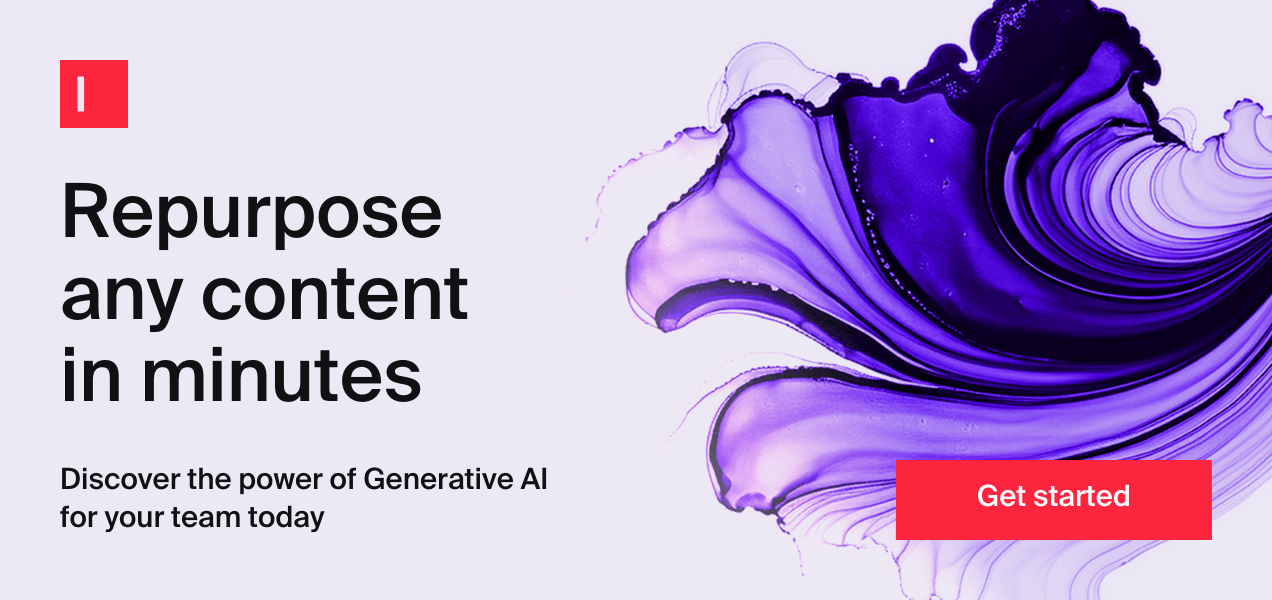
What is an AI text summarizer?
An AI text summarizer is a natural language processing tool designed to transform long-form texts into concise summaries while preserving important information from the original content. These tools automatically extract key points and valuable insights from the source content to generate summaries that are aligned with your objectives.
While conventional AI summarizer tools focus solely on text-based summarization, Typeface's enterprise-grade platform offers purpose-built templates for summarizing a variety of content, including videos (YouTube Blend and Vimeo Blend), podcasts (Podcast Blend), and web content (Web Blend).
One of the key benefits of using an AI text summarizer is efficiency. Rather than allocating high-value knowledge worker hours to manual content analysis, marketing teams can use AI text summarizer tools to instantly generate high-level overviews for campaign materials, competitive intelligence reports, and customer-facing communications. They also help maintain the narrative flow and context, and highlight relevant statistics, data, and important quotations in AI-generated summaries, all while saving precious time.
The applications of AI text summarizer tools extend throughout the marketing value chain: repurposing cornerstone content into high-performing blogs, social media posts, and additional downstream marketing assets for multiple channels with consistent messaging.
Using AI text summarizer for blog content
Marketing teams routinely find themselves drowning in research when trying to produce authoritative blog content. Hours disappear into analyzing industry reports, dissecting competitor strategies, and interpreting market trends on the topic—all before writing even begins. This not only strains resources but also leaves little room for creativity and strategy. An AI text summarizer can cut through this chaos, offering advantages that extend far beyond basic content summarization.
Here we used the Document Transform template on Typeface to repurpose a dense whitepaper into an engaging blog post. The AI first extracts the core insights and key data points from the whitepaper and then restructures this content into a conversational blog format—eliminating the traditional two-phase approach that would have doubled the team's workload.
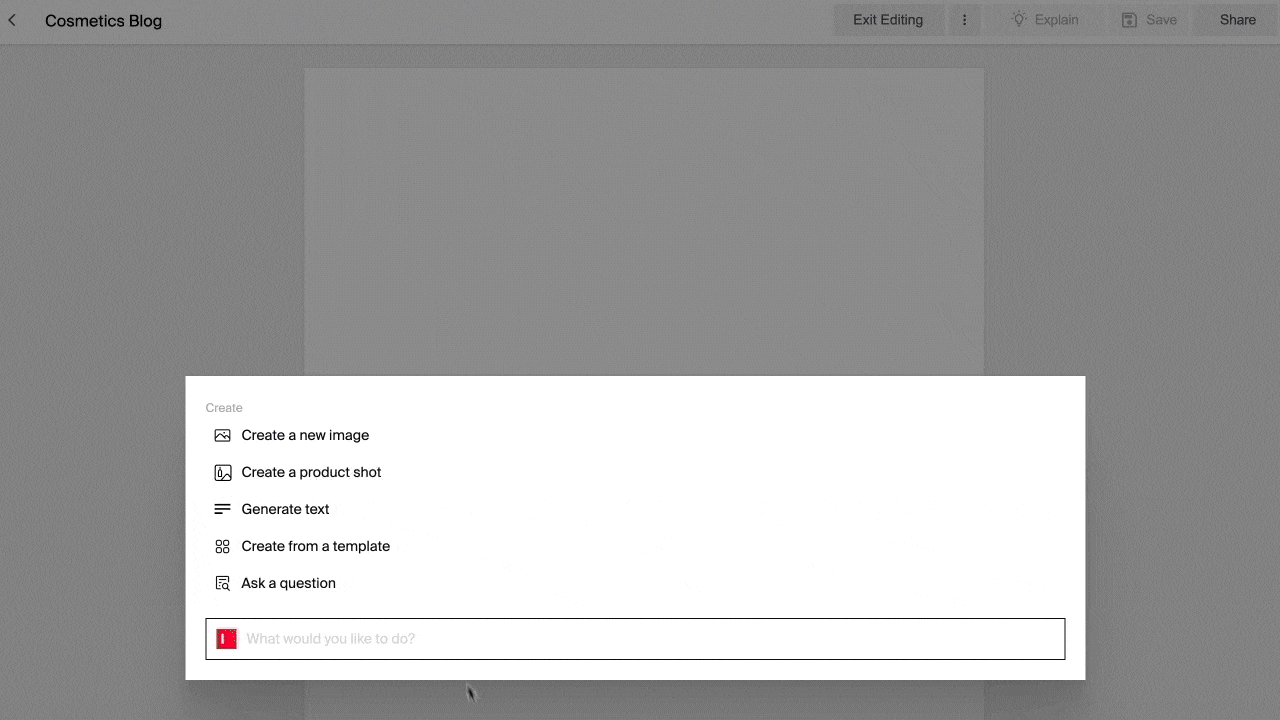
Beyond helping with summarization and research, an AI text summarizer can also create compelling meta descriptions for your blog content. These summaries serve as perfect entry points that communicate the specific value of your content to your audience.
Using AI text summarizer for social media content
According to GWI, the typical user spends 2 hours and 23 minutes daily on social platforms, which accounts for 35.8% of all online activity. This means that for every 100 minutes spent online, users dedicate nearly 36 minutes to social media. For marketers, this concentrated attention window presents a paradoxical challenge: your target audience is overwhelmed with content yet investing considerable time on these platforms. The question becomes not just how to participate in this ecosystem, but how to create meaningful engagement with social media posts that are genuinely valuable.
An AI text summarizer offers a solution to this marketing challenge. Rather than producing generic social posts that disappear into the digital void, AI tools can distill your most valuable insights into social media content that cuts through cognitive overload and captures attention during those critical moments.
Like previously, you can use the Document Transform template to transform your existing long-form assets (whitepapers, case studies, research reports) into multiple platform-optimized social posts without sacrificing substance. There's also a Summarize template on Typeface that can be used for content summarization and repurposing.
For example, if there's a blog you want to summarize and repurpose into a social post, you can add the blog URL along with any instructions for summarization. Within a few minutes, the AI text summarizer will create some options for a social media post from the content. We did the same here, and this was the output.
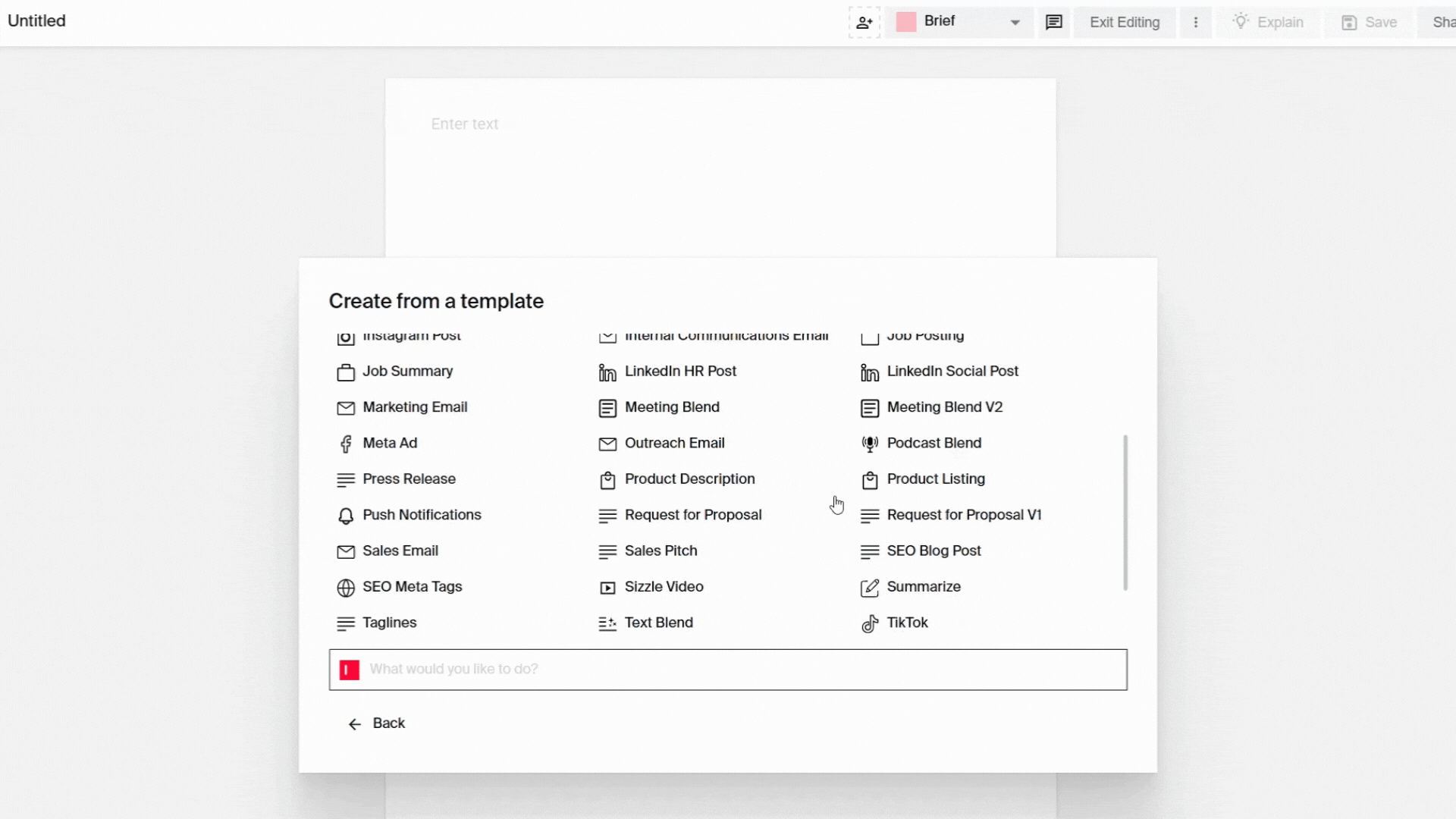
💡Pro tip: A simpler way to generate social post content (including visuals) is with the help of Typeface’s AI templates, like Instagram Post template, X Social Post template, LinkedIn social post template, and other.
Here are some other ways to use an AI text summarizer for social media content:
Synthesizing multiple expert perspectives into informed commentary for social
Extracting compelling quotes or surprising findings to create shareable tweets
Summarizing industry reports to find statistics that can be transformed into infographics
Extracting the most valuable insights from hour-long webinars into a series of focused social posts
Using AI text summarizer for email content
AI text summarizers can deliver measurable ROI by converting high-value, long-form assets into targeted email communications that drive engagement. When your team invests hours to produce a comprehensive industry report, disseminating these exhaustive reports through emails often proves to be impractical and counterproductive. AI can extract the 5-7 key insights, which can then be integrated into concise email communications.
Simply upload your market analysis report along with a brief prompt describing how you’d like the content summarized.

The tool then uses this information to craft an engaging newsletter.

Now, consider your quarterly market analysis, which is usually read in full by a small portion of your audience. A text AI summarizer can distill those critical findings into a compelling 150-word teaser that drives more clicks to the complete resource. Your team's weekly competitive intelligence reports can also be transformed into a Tuesday morning "Market Pulse" email that busy decision-makers actually read, highlighting only the actionable insights that impact strategic planning. And those lengthy product development updates? AI can convert them into clear, prioritized emails with the most important details in bullet points. For your content marketing pipeline, this means extracting maximum value from every piece of premium content.
By strategically repurposing content for emails with the help of an AI text summarizer, you're not just saving production time—you're creating targeted emails that respect your audience's attention while still delivering the insights that drive business outcomes.
Using AI text summarizer for sales enablement content
Sales teams deal with a lot of data—reports, customer feedback, industry analyses, and competitive intelligence—to identify patterns like common customer pain points or emerging product preferences and address customer needs more effectively. But the sheer volume of this data is overwhelming.
AI text summarizers can help repurpose all this data into actionable intelligence, delivering crystallized insights when they matter most. The result? More confident, informed conversations that demonstrate true understanding of prospects’ challenges. AI summarization offers the significant advantage of adaptability, transforming information-rich documents into various formats for specific sales scenarios.
For instance, if you're looking to create customer case study, AI can swiftly extract key results and compelling narratives from a lengthy customer interview to produce a customer success story that builds trust.
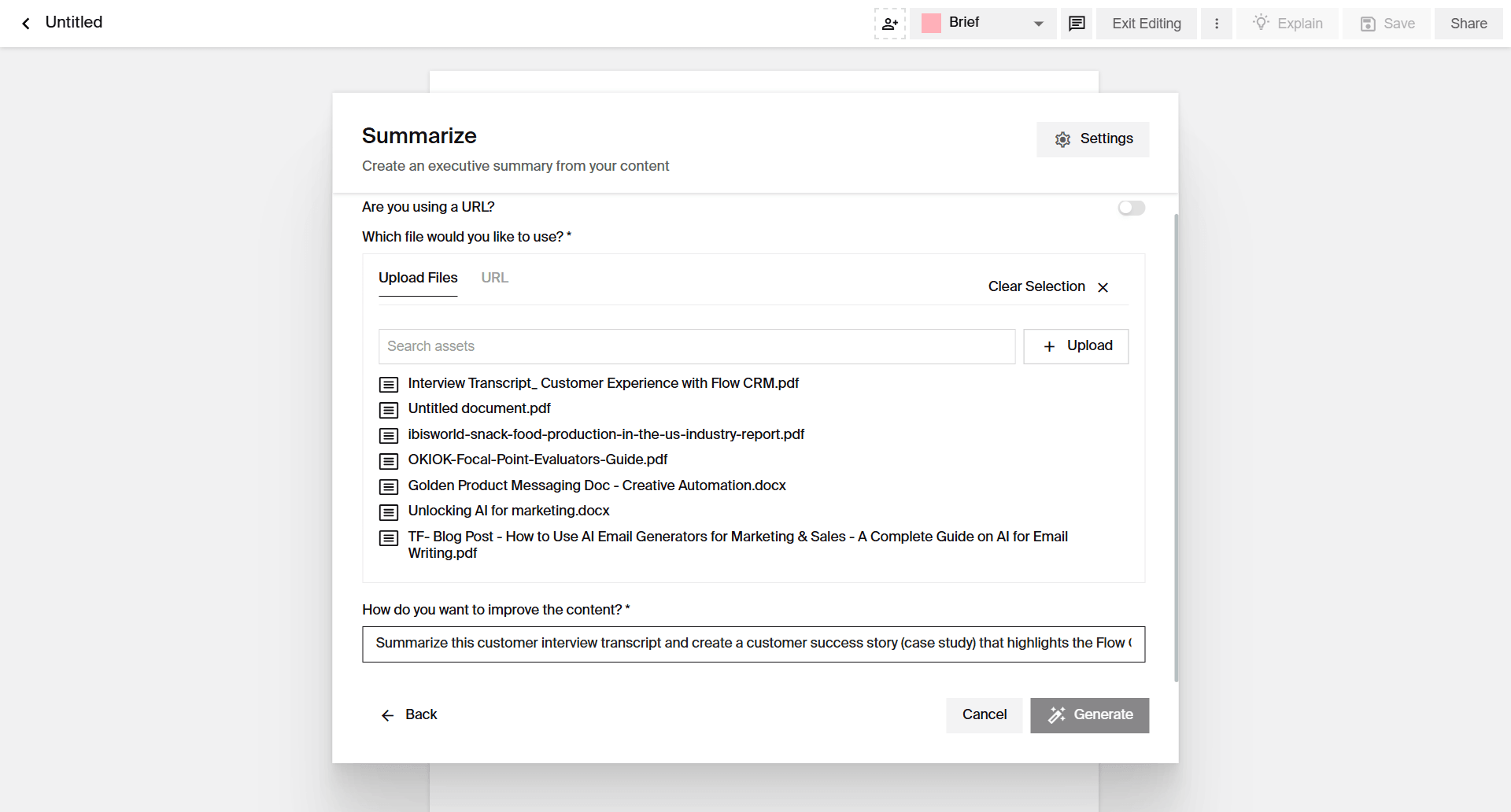
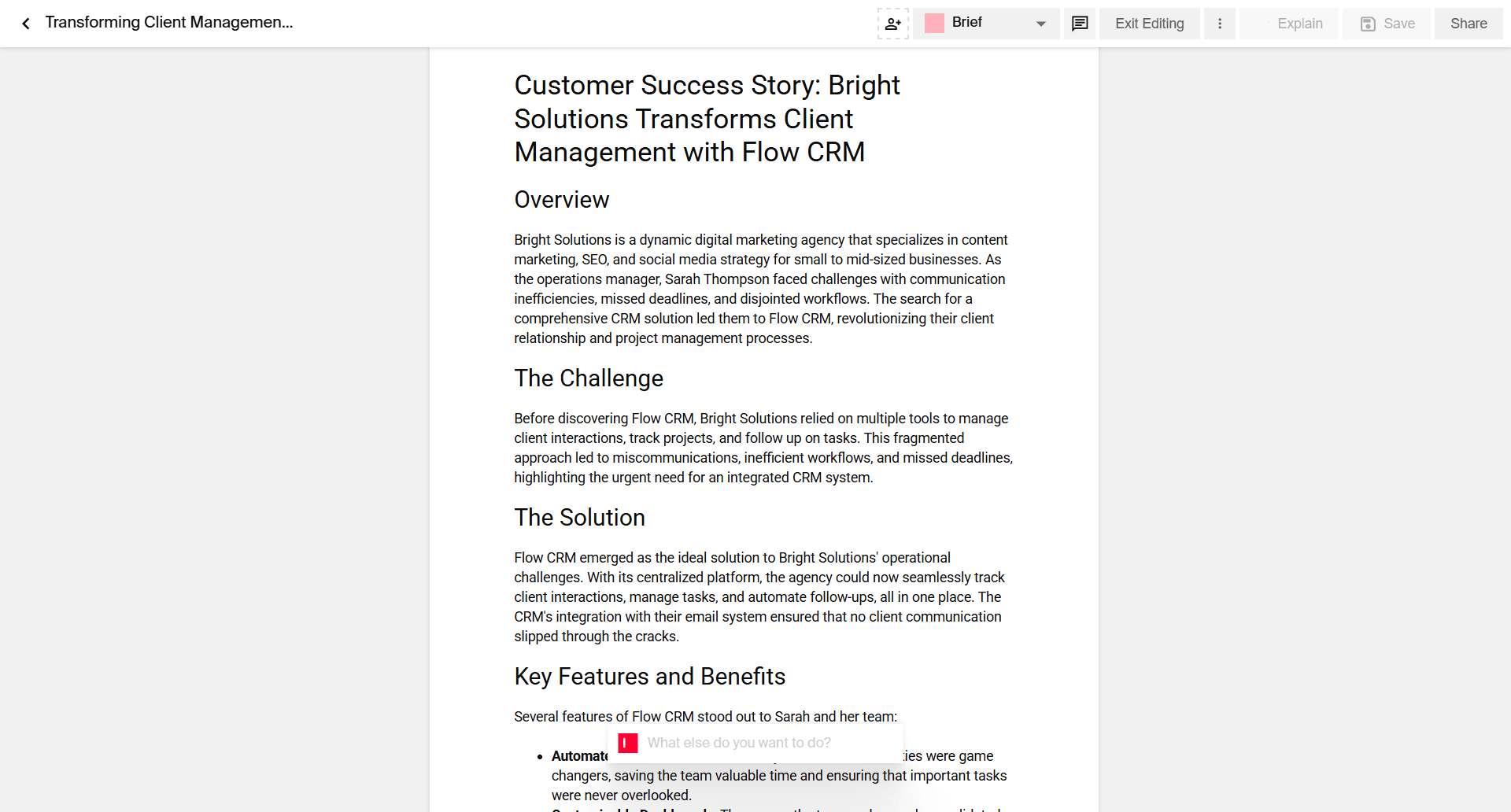
Here are some practical ways sales teams can use AI summarizers:
Transform technical product documentation into concise feature-benefit talking points
Summarize customer success stories into industry-specific proof points for similar prospects
Extract key objection handling points from product training materials
Best practices for using an AI text summarizer
To get the most out of an AI text summarizer, it's important to follow best practices that ensure the generated summaries align with your brand voice and goals. Here are some tips to help you create better AI-generated summaries using these tools:
1. Align summaries with brand voice and goals
When using an AI text summarizer, it's important to ensure that the generated summaries reflect your brand's voice. Typeface makes this easier, by allowing you to train the AI to preserve channel-specific brand voices during summary generation. To create channel and author voices, just share some content examples that capture the brand voice you'd like the AI to use for a specific channel or type of content.
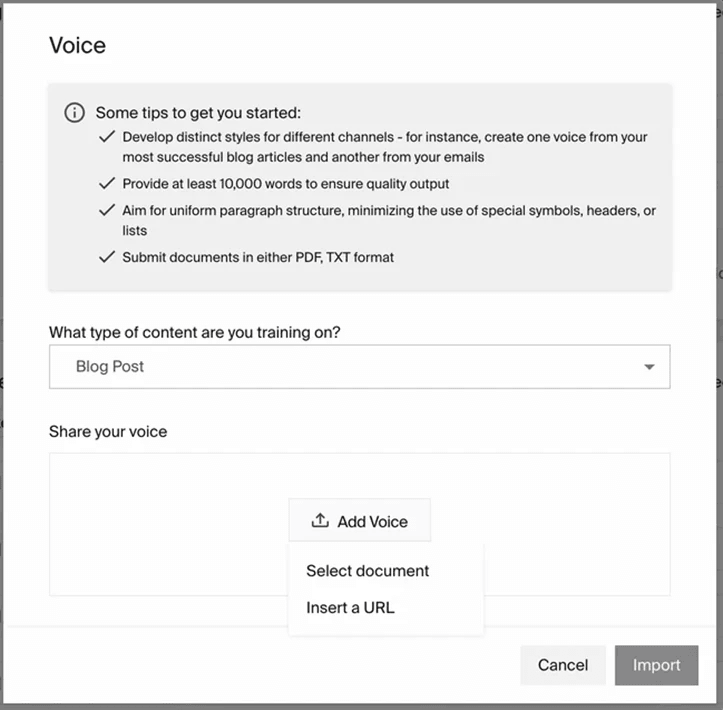
For applying the trained brand voice to your AI-generated summaries, you can change the voice settings directly from the AI template you're using summarizing content.
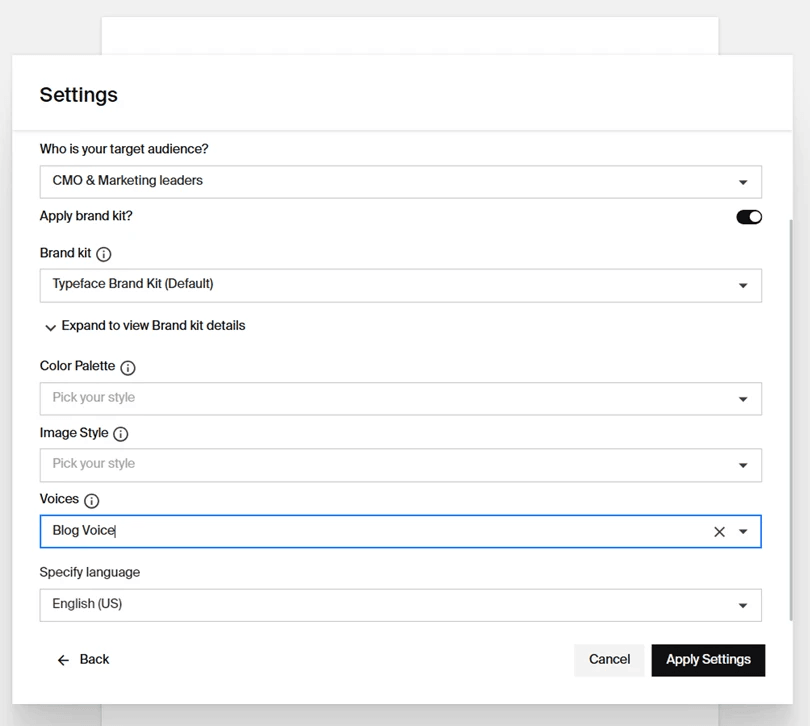
Besides the brand voice and tone, you can also define your brand values in the brand kit to maintain consistency across all communication strategies when sharing your brand story.
2. Enhance SEO with AI-generated summaries
Instead of handling summarization as a completely separate task from SEO strategy, teams can leverage Typeface's smart optimization features to craft content that meets both search and summarization needs seamlessly. With Typeface's SEO refresh tool, content can be automatically optimized for the most relevant keywords.
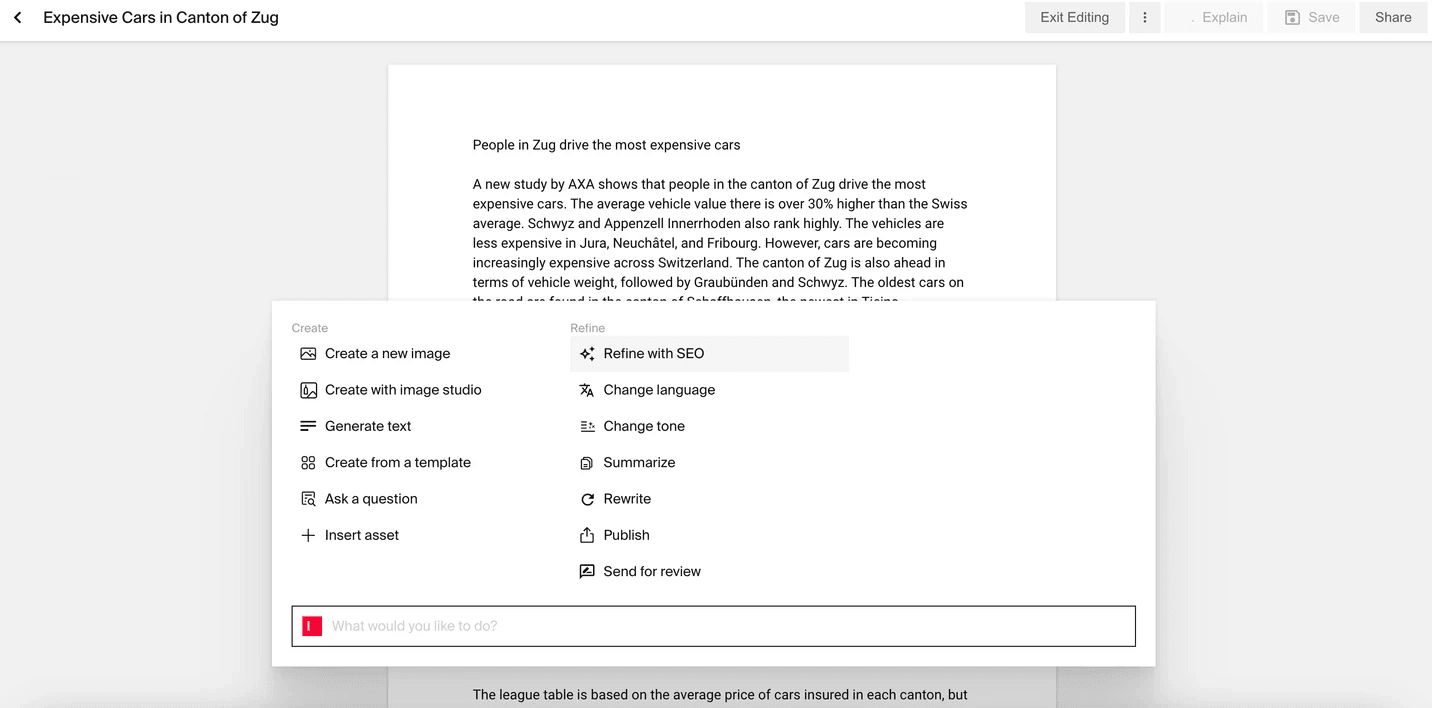
The platform also offers an SEO score that shows how often each keyword is used. This helps you decide which keywords might need more emphasis in your content. With this exercise, you can improve your content's visibility and drive more organic traffic to your content.
3. Write effective AI writing prompts
Rather than providing vague requests for summarization to the AI tool, articulate exact summarization parameters in your AI writing prompts to generate summaries that deliver specific value. Explicitly define format requirements that align with downstream utilization, and specify whether your team requires scannable bullet points, paragraph summaries, or concise excerpts. This ensures summaries aren't merely shorter versions of existing content but precision-crafted assets optimized for specific contexts and consumption environments.
4. Optimizing AI text summarizer settings
To achieve the best results when using the AI text summarizer, it's important to take some time to adjust the settings before you start generating content. On Typeface, there are several customization options at your disposal to ensure your content aligns perfectly with your goals and needs. First, you can specify your target audience. Typeface allows you to create audience profiles with relevant demographic details. This helps the AI tailor the summarized content to match the preferences and expectations of the people you want to reach. Additionally, you have the opportunity to enhance your content's consistency and authenticity by incorporating your brand kit.
Besides this, some AI templates also allow you to customize the length of the AI-generated summary. This is particularly useful when you need a concise overview or a more detailed explanation, depending on the context. Try out various combinations and find out which setups yield the most effective and engaging content for your audience. This experimentation is key to refining and maximizing the potential impact of the AI text summarizer on your projects.
Maximize ROI with AI text summarizers
AI summarization creates a flywheel effect where a single high-value asset generates dozens of derivative pieces, each optimized for specific channels and consumption contexts. By using an AI text summarizer, marketing teams can dramatically reduce the time spent mining existing content while multiplying their value across channels. The strategic advantage isn't just efficiency—it's the ability to extract maximum ROI from every piece of premium content your organization creates.
For forward-thinking marketers, the message is clear: stop creating more content when you haven't maximized what already exists. With proper implementation of AI text summarizers—aligned with your brand voice, SEO strategy, and audience needs—you can transform content creation from a resource drain into a scalable engine that delivers consistent, high-quality messaging across all customer touchpoints.
Sign up today for a personalized Typeface demo and start your 30-day free trial to unlock the full potential of your existing content.

Share
Related articles

AI at Work
How to Use an AI Summarizer to Summarize Videos and Podcasts

Neelam Goswami · Content Marketing Associate
February 4th, 2025 · 12 min read

AI at Work
Content Repurposing with AI: 5 Ways to Repurpose Your Content for Maximum Impact

Neelam Goswami · Content Marketing Associate
November 29th, 2024 · 13 min read

AI at Work
How to Integrate an AI Writing Assistant in Your Existing Content Creation Process

Neelam Goswami · Content Marketing Associate
November 27th, 2024 · 16 min read